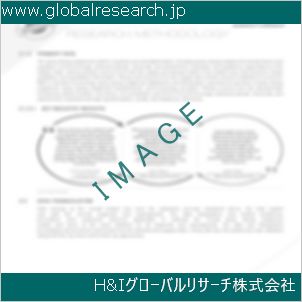Table of Contents
1 Industry Overview of Cristobalite
1.1 Definition and Specifications of Cristobalite
1.1.1 Definition of Cristobalite
1.1.2 Specifications of Cristobalite
1.2 Classification of Cristobalite
1.3 Applications of Cristobalite
1.3.1 Nuclear Application
1.3.2 Non-Nuclear Application
1.4 Industry Chain Structure of Cristobalite
1.5 Industry Overview and Major Regions Status of Cristobalite
1.5.1 Industry Overview of Cristobalite
1.5.2 Global Major Regions Status of Cristobalite
1.6 Industry Policy Analysis of Cristobalite
1.7 Industry News Analysis of Cristobalite
2 Manufacturing Cost Structure Analysis of Cristobalite
2.1 Raw Material Suppliers and Price Analysis of Cristobalite
2.2 Equipment Suppliers and Price Analysis of Cristobalite
2.3 Labor Cost Analysis of Cristobalite
2.4 Other Costs Analysis of Cristobalite
2.5 Manufacturing Cost Structure Analysis of Cristobalite
2.6 Manufacturing Process Analysis of Cristobalite
3 Technical Data and Manufacturing Plants Analysis of Cristobalite
3.1 Capacity and Commercial Production Date of Global Cristobalite Major Manufacturers in 2023
3.2 Manufacturing Plants Distribution of Global Cristobalite Major Manufacturers in 2023
3.3 R&D Status and Technology Source of Global Cristobalite Major Manufacturers in 2023
3.4 Raw Materials Sources Analysis of Global Cristobalite Major Manufacturers in 2023
4 Capacity, Production and Revenue Analysis of Cristobalite by Regions, Types and Manufacturers
4.1 Global Capacity, Production and Revenue of Cristobalite by Regions 2019-2024
4.2 Global and Major Regions Capacity, Production, Revenue and Growth Rate of Cristobalite 2019-2024
4.3 Global Capacity, Production and Revenue of Cristobalite by Types 2019-2024
4.4 Global Capacity, Production and Revenue of Cristobalite by Manufacturers 2019-2024
5 Price, Cost, Gross and Gross Margin Analysis of Cristobalite by Regions, Types and Manufacturers
5.1 Price, Cost, Gross and Gross Margin Analysis of Cristobalite by Regions 2019-2024
5.2 Price, Cost, Gross and Gross Margin Analysis of Cristobalite by Types 2019-2024
5.3 Price, Cost, Gross and Gross Margin Analysis of Cristobalite by Manufacturers 2019-2024
6 Consumption Volume, Consumption Value and Sale Price Analysis of Cristobalite by Regions, Types and Applications
6.1 Global Consumption Volume and Consumption Value of Cristobalite by Regions 2019-2024
6.2 Global and Major Regions Consumption Volume, Consumption Value and Growth Rate of Cristobalite 2019-2024
6.3 Global Consumption Volume and Consumption Value of Cristobalite by Types 2019-2024
6.4 Global Consumption Volume and Consumption Value of Cristobalite by Applications 2019-2024
6.5 Sale Price of Cristobalite by Regions 2019-2024
6.6 Sale Price of Cristobalite by Types 2019-2024
6.7 Sale Price of Cristobalite by Applications 2019-2024
6.8 Market Share Analysis of Cristobalite by Different Sale Price Levels
7 Supply, Import, Export and Consumption Analysis of Cristobalite
7.1 Supply, Consumption and Gap of Cristobalite 2019-2024
7.2 Global Capacity, Production, Price, Cost, Revenue, Supply, Import, Export and Consumption of Cristobalite 2019-2024
7.3 USA Capacity, Production, Price, Cost, Revenue, Supply, Import, Export and Consumption of Cristobalite 2019-2024
7.4 EU Capacity, Production, Price, Cost, Revenue, Supply, Import, Export and Consumption of Cristobalite 2019-2024
7.5 China Capacity, Production, Price, Cost, Revenue, Supply, Import, Export and Consumption of Cristobalite 2019-2024
7.6 Japan Capacity, Production, Price, Cost, Revenue, Supply, Import, Export and Consumption of Cristobalite 2019-2024
8 Major Manufacturers Analysis of Cristobalite
8.1 Manufacturer One
8.1.1 Company Profile
8.1.2 Product Picture and Specifications
8.1.2.1 Type I
8.1.2.2 Type II
8.1.2.3 Type III
8.1.3 Capacity, Production, Price, Cost, Gross and Revenue
8.1.4 Contact Information
8.2 Manufacturer Two
8.2.1 Company Profile
8.2.2 Product Picture and Specifications
8.2.2.1 Type I
8.2.2.2 Type II
8.2.2.3 Type III
8.2.3 Capacity, Production, Price, Cost, Gross and Revenue
8.2.4 Contact Information
8.3 Manufacturer Three
8.3.1 Company Profile
8.3.2 Product Picture and Specifications
8.3.2.1 Type I
8.3.2.2 Type II
8.3.2.3 Type III
8.3.3 Capacity, Production, Price, Cost, Gross and Revenue
8.3.4 Contact Information
8.4 Manufacturer Four
8.4.1 Company Profile
8.4.2 Product Picture and Specifications
8.4.2.1 Type I
8.4.2.2 Type II
8.4.2.3 Type III
8.4.3 Capacity, Production, Price, Cost, Gross and Revenue
8.4.4 Contact Information
8.5 Manufacturer Five
8.5.1 Company Profile
8.5.2 Product Picture and Specifications
8.5.2.1 Type I
8.5.2.2 Type II
8.5.2.3 Type III
8.5.3 Capacity, Production, Price, Cost, Gross and Revenue
8.5.4 Contact Information
…
9 Marketing Trader or Distributor Analysis of Cristobalite
9.1 Marketing Channels Status of Cristobalite
9.2 Traders or Distributors with Contact Information of Cristobalite by Regions
9.3 Ex-work Price, Channel Price and End Buyer Price Analysis of Cristobalite
9.4 Regional Import, Export and Trade Analysis of Cristobalite
10 Industry Chain Analysis of Cristobalite
10.1 Upstream Major Raw Materials Suppliers Analysis of Cristobalite
10.1.1 Major Raw Materials Suppliers with Contact Information Analysis of Cristobalite
10.1.2 Major Raw Materials Suppliers with Supply Volume Analysis of Cristobalite by Regions
10.2 Upstream Major Equipment Suppliers Analysis of Cristobalite
10.2.1 Major Equipment Suppliers with Contact Information Analysis of Cristobalite
10.2.2 Major Equipment Suppliers with Product Pictures Analysis of Cristobalite by Regions
10.3 Downstream Major Consumers Analysis of Cristobalite
10.3.1 Major Consumers with Contact Information Analysis of Cristobalite
10.3.2 Major Consumers with Consumption Volume Analysis of Cristobalite by Regions
10.4 Supply Chain Relationship Analysis of Cristobalite
11 Development Trend of Analysis of Cristobalite
11.1 Capacity, Production and Revenue Forecast of Cristobalite by Regions and Types
11.1.1 Global Capacity, Production and Revenue of Cristobalite by Regions 2024-2029
11.1.2 Global and Major Regions Capacity, Production, Revenue and Growth Rate of Cristobalite 2024-2029
11.1.3 Global Capacity, Production and Revenue of Cristobalite by Types 2024-2029
11.2 Consumption Volume and Consumption Value Forecast of Cristobalite by Regions, Types and Applications
11.2.1 Global Consumption Volume and Consumption Value of Cristobalite by Regions 2024-2029
11.2.2 Global and Major Regions Consumption Volume, Consumption Value and Growth Rate of Cristobalite 2024-2029
11.2.3 Global Consumption Volume and Consumption Value of Cristobalite by Types 2024-2029
11.2.4 Global Consumption Volume and Consumption Value of Cristobalite by Applications 2024-2029
11.3 Supply, Import, Export and Consumption Forecast of Cristobalite
11.3.1 Supply, Consumption and Gap of Cristobalite 2024-2029
11.3.2 Global Capacity, Production, Price, Cost, Revenue, Supply, Import, Export and Consumption of Cristobalite 2024-2029
11.3.3 USA Capacity, Production, Price, Cost, Revenue, Supply, Import, Export and Consumption of Cristobalite 2024-2029
11.3.4 EU Capacity, Production, Price, Cost, Revenue, Supply, Import, Export and Consumption of Cristobalite 2024-2029
11.3.5 China Capacity, Production, Price, Cost, Revenue, Supply, Import, Export and Consumption of Cristobalite 2024-2029
11.3.6 Japan Capacity, Production, Price, Cost, Revenue, Supply, Import, Export and Consumption of Cristobalite 2024-2029
12 New Project Investment Feasibility Analysis of Cristobalite
12.1 New Project SWOT Analysis of Cristobalite
12.2 New Project Investment Feasibility Analysis of Cristobalite
13 Conclusion of the Global Cristobalite (CAS 14464-46-1) Industry 2024 Market Research Report
| ※参考情報 クリストバライト(Cristobalite)は、シリカ(二酸化ケイ素)の結晶形態の一つであり、化学式はSiO₂です。これは、自然界で形成される鉱物であり、特に高温条件下で生成されます。クリストバライトは、高温での安定性を持つことから、様々な工業用途に広く利用されている重要な材料です。 クリストバライトの定義に関して言えば、これはシリカのポリモルフの一種で、他に有名なポリモルフとしては石英やトリジサイトがあります。クリストバライトは、一般的には高温で結晶化するため、熱処理された砂岩や火山岩などに多く見られます。特に、1,470℃以上の温度条件で安定し、1,000℃以上に加熱されると、石英がクリストバライトに相変化します。 特徴について述べると、クリストバライトは、結晶構造が立方体で、非常に硬い特性を持っています。硬さは約7であり、石英と比べると少し柔らかいですが、高温における強度と耐熱性は突出しています。クリストバライトは、無色または白色の結晶として見られ、透明度が高く、光沢もあるため、装飾的な用途にも利用されることがあります。 クリストバライトにはいくつかの種類があります。一般的には、クリストバライトαとクリストバライトβに分類されます。αクリストバライトは、室温から約1,470℃まで安定した相であり、その後βクリストバライトに変わります。両者は、温度変化に応じて相互に変換可能であり、この転換過程は熱処理技術において重要な要素として考えられています。 クリストバライトの用途は非常に多岐にわたります。まず、ガラス製造において重要な材料であり、耐熱性を要するガラスの製造に使用されます。また、セラミックスの原材料としても利用され、熱膨張係数が小さいことから、精密な工業製品や装置の部品において重宝されています。さらに、クリストバライトは、特定のフィラーや添加剤としても使用され、さまざまな製品の性能向上に寄与しています。例えば、プラスチック、塗料、ゴムなどに混ぜることで、それらの特性を強化します。 関連技術については、クリストバライトの利用において、熱処理や焼結技術が重要とされています。このような技術によって、クリストバイトの結晶構造を制御し、最適な特性を持つ材料を製造可能です。また、クリストバライトの特性を最大限に活用するためには、合成技術も重要です。例えば、高温超伝導材料や新しいセラミック材料の合成において、クリストバライトを含むシリカ系化合物が利用されることがあります。 一方で、クリストバライトは健康に関連するリスクがあることにも注意が必要です。特に、クリストバライトの粉塵が吸入されると、害を及ぼす可能性が指摘されています。このため、工業用途においては適切な取り扱いや安全基準が求められることになります。 以上のように、クリストバライトは特に高温における特性を持つシリカの結晶形であり、さまざまな工業用途で利用されています。その用途に応じて、熱処理や合成技術が発展しており、今後も新たな材料開発において重要な役割を果たしていくでしょう。 |
❖ 免責事項 ❖
http://www.globalresearch.jp/disclaimer












